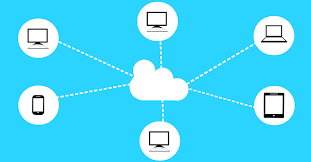The Challenges of Traditional Municipal Administration
You know how it goes – you need to get some paperwork done at city hall, only to find yourself bogged down in forms, long lines, and bureaucratic red tape. It’s enough to make you want to pull your hair out. But what if improving civic processes could be as easy as the tap of a screen? New municipal software is aiming to do just that by streamlining everything from permit applications to public records requests. So wave goodbye to the headaches of local governance and say hello to a brave new world of digital access and transparency. In this article, we’ll explore how smarter tech can empower both citizens and administrators through automated workflows, mobile optimization, and data-driven insights. Get ready to see how innovative software can cut through the red tape to help build the accountable, efficient cities we all deserve.
How Municipal Software Improves Efficiency
Municipal governments have struggled for years with outdated technology and bureaucratic processes. The reliance on paper records and manual workflows slows everything down and makes citizens wait weeks or even months for approvals and permits.
Outdated Systems and Silos
Traditional municipal software systems don’t “talk” to each other. Different departments use their own separate systems to track records, approvals, and billing. This lack of integration creates “data silos” that hide information and prevent a unified view of municipal operations. Employees waste time tracking down information from other departments instead of focusing on their work.
Labor-Intensive Processes
So much of municipal work is manual and paper-based. Physical files have to be retrieved, records searched by hand, and forms filled out with pen and paper. Simple tasks like issuing a permit can span several departments, each with their own manual workflow. The amount of time and effort required for routine administration leaves little left over for serving citizens and improving municipal services.
With the challenges of outdated technology, data silos, and inefficient processes, it’s no wonder citizens often face long wait times, lack of transparency, and less than stellar experiences with their municipal government. The good news is, municipal software can help address these pain points through automation, integration, and streamlined digital workflows. Government administration doesn’t have to be slow and painful—technology can help make it faster, easier, and more citizen-focused.
Key Features to Look for in Municipal Software Solutions
Streamlined Workflows
With municipal software, the days of shuffling papers and waiting for approvals are over. Automated workflows route tasks directly to the right people, ensuring nothing falls through the cracks. Employees can track the progress of permits, licenses, and other requests in real time, providing more transparency for staff and citizens alike.
Integrated Systems
Municipal software integrates separate systems like permitting, licensing, code enforcement, and billing into a single platform. This breaks down data silos, giving staff a holistic view of city operations and enabling them to spot connections they might otherwise miss. Citizens benefit too, with the option to log in and access all their municipal accounts in one place.
Data-Driven Insights
As municipal software collects and organizes data over time, it reveals key insights to help cities operate more strategically. Usage reports show how to allocate resources where they’re needed most. Trend analysis predicts spikes in demand so cities can staff up accordingly. And by identifying inefficiencies, cities can make data-driven changes that streamline processes in a way that maximizes both productivity and citizen satisfaction.
With increased efficiency, transparency, and data-driven decision making, municipal software gives cities the tools they need to do more with less. Tight budgets and limited resources are no longer barriers to high-quality governance and community service. Municipal software provides a roadmap for the smart, sustainable cities of the future.








